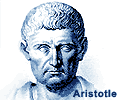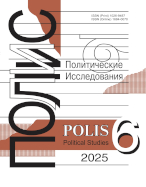The Dynamics of Civil Identity Transformation in Modern Armenia:
Factors and Subjects
Sarkisyan H.L.,
Head of the Department of Political Science, Russian-Armenian (Slavonic) University, hovhannes.sargsyan@rau.am
elibrary_id: 1059236 |
Dunamalyan N.A.,
Cand. Sci. (Pol. Sci.), senior lecturer of department of Political Science, Russian-Armenian (Slavonic) University, norayr.dunamalyan@rau.am
elibrary_id: 777782 |
DOI: 10.17976/jpps/2020.02.05
Sarkisyan H.L., Dunamalyan N.A. The Dynamics of Civil Identity Transformation in Modern Armenia: Factors and Subjects. – Polis. Political Studies. 2020. No. 2. https://doi.org/10.17976/jpps/2020.02.05
The work has been supported by the Russian-Armenian (Slavonic) University at the expense of the Ministry of Science and Higher Education of the Russian Federation in frameworks of project “National culture as a strategic resource of development: history and challenges of modernity (on the example of Armenia and Armenians)”.
This paper is devoted to the issue of civil identity development in Armenia in the context of the protest movements of recent years that culminated in the “velvet revolution” in 2018. Through a comprehensive analysis, the authors aim to define the main factors that have had an influence on Armenian society’s civic consciousness transformation. The authors believe that it is necessary to take into account the specifics of the historical development of the Armenian people, not excluding the use of existing general methodological concepts (mainly created in the context of Western society’s development). Regarding the development of Armenian society’s civil identity, a significant place is given to the Soviet period, which, with all the positive and negative aspects of this era, contributed to the formation of a number of civic consciousness basic elements, which to some extent became the basis for the future independence movement. “Karabakh”, “Armenian army”, “state”, “historical past”, “tradition”, and “Christianity” are all concepts included in the symbolic portrait of modern Armenian citizenship, albeit with great reservations. These reservations are connected with the specifics of the construction of the Armenian national consciousness, on the basis of various elements that are formed during the conflict of cultural, confessional and civic identity models. In the post-Soviet period, social discourse in Armenia was built around the opposition of “ethno-national” and “state-centric” approaches. The construction of civic identity in this context directly depends on the development of society, since the level of “personalization” of political institutions has a close relationship with the degree of trust in them. The presented statistics confirm this by demonstrating the specificity of the transformation of civil consciousness before and after the “velvet revolution”, as well as defining the main trends of domestic policy and the development of Armenian society as a whole. The authors present an analysis of the main factors (change of generations, political culture, transformation of social protest into political), contributing to further research on the development of civic identity in the face of the new risks emergence and threats in the context of determining the optimal format of relations between the state and society.
References
Broers L. 2005. After the ‘Revolution’: Civil Society and the Challenges of Consolidating Democracy in Georgia. – Central Asian Survey. Vol. 24. No. 3. P. 333-350. https://doi.org/10.1080/02634930500310444
Demokratizatsiya: The Journal of Post-Soviet Democratization. 2018. Vol. 26. No. 4.
Grodsky B. 2012. Co-optation or Empowerment? The Fate of Pro-Democracy NGOs after the Rose Revolution. – Europe-Asia Studies. No. 64 (9). P. 1684-1708. https://doi.org/10.1080/09668136.2012.718419
Gurr T.R. 1970. Why Men Rebel. Princeton: Princeton University Press.
Ishkanian A. 2018. After the Velvet Revolution: Shifting Space for Civil Society in Armenia. – From Shrinking Space to Post-Revolutionary Space: Reimagining the Role and Relations of Civil Society in Armenia.
Andreasyan Zh., Ishkanian A., Manusyan A., Manusyan S., Zhamakochyan A. Analytical report. P. 70-78. https://doi.org/10.4324/9780203929223
Iskandaryan A., Mikaelian H., Minasyan S. 2016. War, Business and Politics: Informal Networks and Formal Institutions in Armenia. Yerevan: Caucasus Institute. https://doi.org/10.15804/athena.2018.57.12
Laverty N. 2008. The Problem of Lasting Change: Civil Society and the Colored Revolutions in Georgia and Ukraine. – Demokratizatsiya: The Journal of Post-Soviet Democratization. Vol. 16. No. 2. P. 143-161. https://doi.org/10.3200/demo.16.2.143-162
Muskhelishvili M., Jorjoliani. G. 2009. Georgia’s Ongoing Struggle for a Better Future Continued: Democracy Promotion Through Civil Society Development. – Demokratizatsiya: The Journal of Post-Soviet Democratization. Vol. 16. No. 4. P. 682-708. https://doi.org/10.1080/13510340903083000
Silaev N., Fomin I. 2018. My Step Aside from Sasna Tsrer: The Dynamics of Protest Coalitions in Armenia, 2016 and 2018. – Demokratizatsiya: The Journal of Post-Soviet Democratization. Vol. 26. No. 4. P. 483-508.
Stark Ch. 2018. The Neoliberal Ideology, its Contradictions, the Consequences and Challenges for Social Work. – Ljetopis socijalnog rada. Vol. 25. No. 1. P. 39-63. https://doi.org/10.3935/ljsr.v25i1.196
Ter-Matevosyan V. 2017. Institutions and Identity Politics in the Armenian Diaspora: the Cases of Russia and Lebanon. – Diaspora Studies. Vol. 10. No. 1. P. 64-80. URL: https://doi.org/10.1080/09739572.2016.1239436
Atanesyan A.V. 2018. “Velvet Revolution” in Armenia: Potential, Gains and Risks of Political Protest Activity. – Polis. Political Studies. 2018. No. 6. P. 80-98. (In Russ.) https://doi.org/10.17976/jpps/2018.06.06
Identichnost’: Lichnost’, obshchestvo, politika. Entsiklopedicheskoe izdanie. [Identity: Individual, Society, Politics]. Encyclopedic Edition. 2017. Ed. by I.S. Semenenko. Moscow: Izdatelstvo VES MIR. (In Russ.)
Iskandaryan A.M. 2011. Armenia Between Autocracy and Polyarchy. – Pro et Contra. No. 3-4. P. 19-28. (In Russ.)
Martin T. 2011. The Affirmative Action Empire: Nations and Nationalism in the Soviet Union, 1923-1933. (Russ. ed.: Martin T. Imperiya “polozhitel’noi deyatel’nosti“. Natsii i natsionalizm v SSSR, 1923-1939. Moscow: ROSSPEN Press).
Marutian H.T. 2008. The Monument to Genocide Victims in the Context of Armenian Remembering Rites. – Etnograficheskoe obozrenie. No. 3. P. 119-128. (In Russ.)
Medushevsky A.N. 2018. Populizm na Zapade i v Rossii: skhodstva i razlichiya v sravnitel’noi perspective [Populism in the West and in Russia: Similarities and Differences in a Comparative Perspective]. – Populizm kak obshchii vyzov [Populism as a General Challenge]. Ed. by K. Krouford, B. Makarenko, N. Petrov. Moscow: ROSSPEN. P. 47-57. (In Russ.)
Olson M. 1995. The Logic of Collective Action: Public Goods and the Theory of Groups. (Russ. ed.: Olson M. Logika kollektivnykh deistviI: obshchestvennye blaga i teoriya grupp. Moscow: Fond ekonomicheskoi initsiativy Press).
Poghosyan G.A. 2005. Sovremennoe armyanskoe obshchestvo: osobennosti transformatsii [The Modern Armenian Society: Features of Transformation]. Moscow: Academia Press. 324 p. (In Russ.)
Sarkisyan H.L. 2017. Armyanskaya identichnost’: problema sinteza modelei “kul’turno-istoricheskoi“ i “gosudarstvennoi“ natsii [The Armenian Identity and the Issue of a Synthesis of “Cultural-Historical“ and “State“ Nation Models]. – Problemy natsional’noi identichnosti v kontekste sovremennoi globalizatsii: materialy mezhdunarodnoi nauchnoi konferentsii 3-4 noyabrya 2017 goda [The Problems of National Identity in Context of Modern Globalization. International Scientific Forum Proceedings. November 3-4, 2017]. Yerevan: RAU Press. P. 134-152. (In Russ.)
Sarkisyan H.L. 2018. The Cultural Resource of Identity Policy (Armenia’s Example). – Herald of Russian-Armenian University. No. 2 (29). P. 28-33. (In Russ.)
Scott J. 2005. Seeing Like a State: How Certain Schemes to Improve the Human Condition Have Failed. (Russ. ed.: Scott J. Blagimi namereniyami gosudarstva. Pochemu i kak provalilis’ proekty uluchsheniya uslovii chelovecheskoi zhizni. Moscow: Universitetskaya kniga Press).
Semenenko I.S. 2017. Grazhdanskaya identichnost’ [Civic Identity]. – Identichnost’: lichnost’, obshchestvo, politika. Ehntsiklopedicheskoe izdanie [Identity: Individual, Society, Politics. Encyclopedic Edition]. Ed. by I.S. Semenenko]. Moscow: Izdatelstvo VES MIR.. P. 654-658. (In Russ.)
Zolyan M.S. 2011. “Barkhatnaya revolyutsiya“ v Armenii: dostizheniya i neudachi [“Velvet Revolution“ in Armenia: Achievements and Failures]. – Yuzhnyi Kavkaz – 20 let nezavisimosti [The South Caucasus – 20 Years of Independence]. Moscow: Friedrich Ebert Foundation. P. 45-65. (In Russ.)
Zolyan S.T. 2010. Armeniya v 2008 godu: feodal’naya demokratiya ili demokraticheskii feodalizm [Armenia in 2008: Feudal Democracy or Democratic Feudalism]. – Kavkaz-2008. Ezhegodnik Instituta Kavkaza. [The Caucasus-2008. The Caucasus Institute Yearbook]. Yerevan: Caucasus Institute. P. 24-42. (In Russ.)
See also:
Semenenko I.S., Lapkin V.V., Bardin A.L., Pantin V.I.,
Between the State and the Nation: Dilemmas of Identity Policy in Post-Soviet Societies. – Polis. Political Studies. 2017. No5
Semenenko I.S.,
Dilemmas of national identity: political risks and social inputs. – Polis. Political Studies. 2009. No6
Drobizheva L.M., Ryzhova S.V.,
Civic and Ethnic Identity and Perception of the Preferable State in Russia. – Polis. Political Studies. 2015. No5
Drobizheva L.M.,
Russian Identity: Discussions in the Political Space and Dynamics of Mass Consciousness. – Polis. Political Studies. 2018. No5
Semenenko I.S., Lapkin V.V., Pantin V.I.,
Identity in the system of coordinates of the world development. – Polis. Political Studies. 2010. No3




.jpg)






 print
print
.jpg)
.jpg)